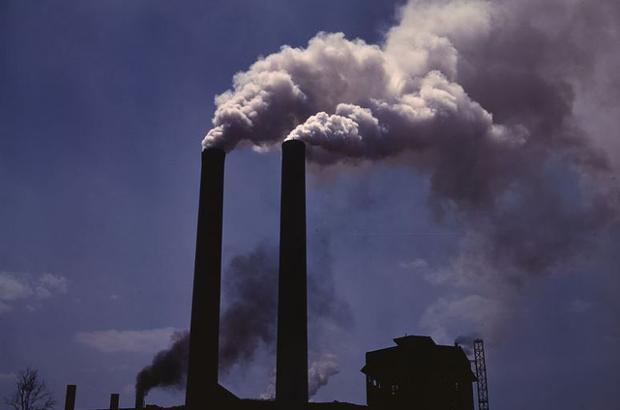In the study published Feb. 5 in the journal Geophysical Research Letters, researchers found that there may be more than 15 million gallons (58 million liters) of mercury buried in the permafrost of the Northern Hemisphere.
That’s twice as much mercury as can be found in the rest of Earth’s soils, ocean and atmosphere combined and about 10 times the mercury emissions produced by humans in the past 30 years. “It really blew us away,” said Paul Schuster, a hydrologist at the U.S. Geological Survey in Boulder, Colorado, and lead author of the study reports Inside Climate News.
Releases into the environment
Mercury (Hg) is a naturally occurring element and is the only metallic element that is liquid at standard conditions for temperature and pressure. Natural sources, such as volcanoes, are responsible for approximately half of the atmospheric mercury emissions. The other half is human-caused.
Stationary combustion, of which coal-fired power plants are the largest aggregate source, account for 65 percent of human-caused mercury emissions. Emissions from coal combustion are between one and two orders of magnitude higher than emissions from oil combustion, depending on the country, according to a study published in 2000.
The rest of the human-caused mercury emissions come from gold production, which is a significant source of atmospheric mercury in eastern Canada, smelters, cement production, and various other production sources.
Mercury can also enter into the environment through the improper disposal of products containing mercury, such as auto parts, batteries, fluorescent bulbs, medical products, thermometers, and thermostats. Tobacco plants absorb large amounts of heavy metals like mercury from the soil into the leaves. These are subsequently inhaled during tobacco smoking.
Be assured of this – Mercury is toxic and can lead to a number of conditions. including damage to the brain, kidneys, and lungs. Mercury poisoning can result in several diseases, including acrodynia (pink disease), Hunter-Russell syndrome, and Minamata disease.
And Mercury’s accumulation in fish and shellfish has been widely documented. Concentrations of mercury are usually in the form of methylmercury, a highly toxic organic compound of mercury, with the shark, swordfish, king mackerel, bluefin tuna, albacore tuna, and tilefish containing higher concentrations of mercury than others.
The danger of melting permafrost
In the Northern Hemisphere, permafrost accounts for about 8.8 million square miles (22.79 million square kilometers) of land — or roughly 24 percent of exposed Earth, according to the National Snow and Ice Data Center.
The Northern Hemisphere’s frozen layer contains thousands of years worth of organic carbon, like plants and animal carcasses. And as climate change causes the Earth to warm, the organic matter that has been frozen starts to thaw and decompose. The decomposition releases gases like methane and carbon dioxide, as well as other long-dormant things like anthrax, ancient bacteria and viruses – and mercury.
“The mercury that ends up being released as a result of the thaw will make its way up into the atmosphere or through the fluvial systems via rivers and streams and wetlands and lakes and even groundwater,” said Schuster. “Sooner or later, all the water on land ends up in the ocean.”
Study covers eight years of research
Over the eight years of the study, researchers drilled 13 permafrost soil cores of varying depths at a number of Alaskan sites along a north-south transect that represented a broad array of characteristics and ages of the permafrost.
Each core was cut into smaller samples, which were photographed, wrapped, labeled, and stored in a portable freezer to be shipped back to the U.S. Geological Survey (USGS) Research Laboratory in Boulder, Colorado, where they were stored at -20 degrees Centigrade until they were analyzed.
Using the mercury contents of their 13 cores as a starting point, the researchers estimated the total amount of mercury sealed away below North American permafrost to be roughly 793 gigagrams — or more than 15 million gallons.
“There would be no environmental problem if everything remained frozen, but we know the Earth is getting warmer,” study author Paul Schuster, said in a statement. “This discovery is a game-changer.”
Live Science points out that while researchers have attempted to quantify the billions of tons of carbon dioxide, methane and even “zombie pathogens” that could be loosed into the air and the oceans by melting permafrost, mercury contamination is an unpredictable issue.
A big concern is that the mercury released could seep into nearby waterways and transform into methylmercury, a toxin that can cause motor impairment and birth defects in animals, Edda Mutter, science director for the Yukon River Inter-Tribal Watershed Council, said in a statement.
“Rural communities in Alaska and other northern areas have a subsistence lifestyle, making them vulnerable to methylmercury contaminating their food supply,” Mutter added.
The researchers are currently working on a follow-up study modeling the release of permafrost due to climate change, according to the statement.


















